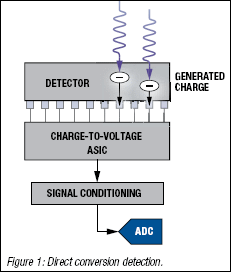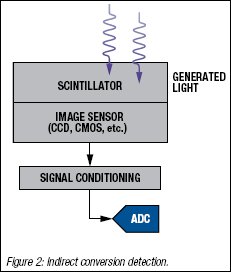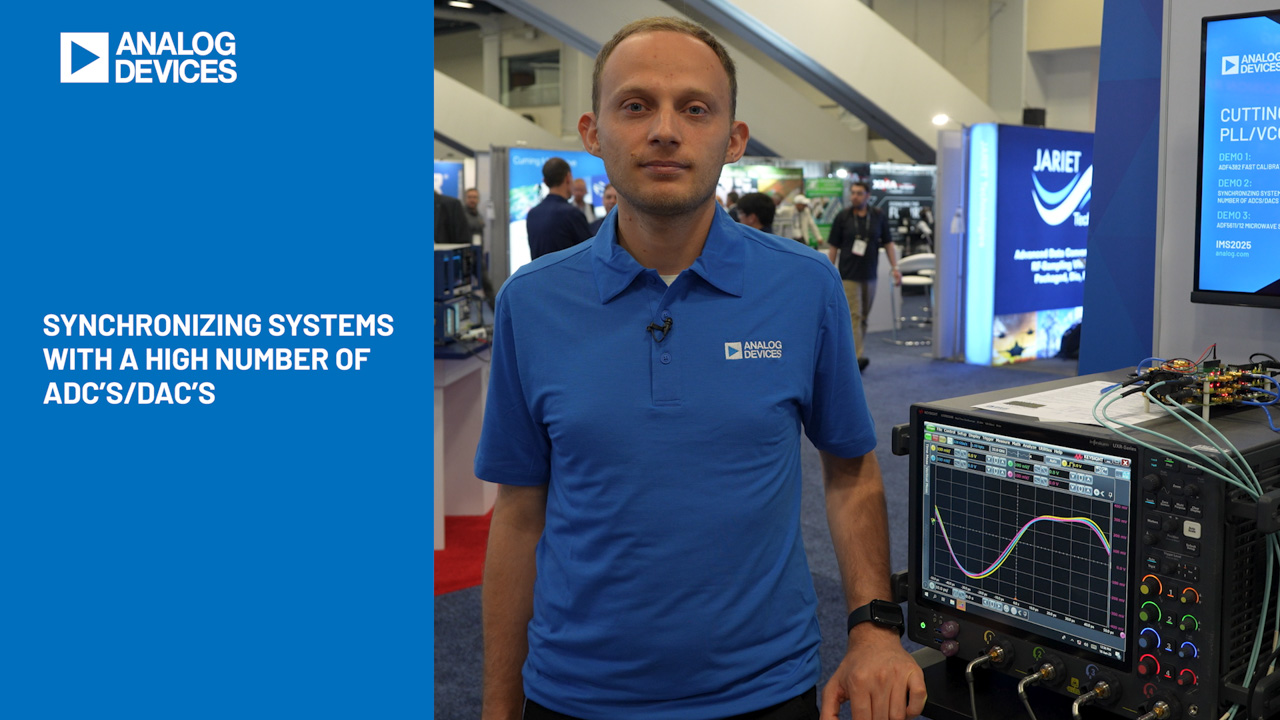Digital X-ray is changing the way radiology departments operate. This technology is able to reduce patient exposure to radiation, improve diagnostic image quality, and eliminate thousands of dollars in chemical processing costs as compared to traditional X-ray systems.
Digital X-ray takes many forms that can be separated into direct conversion and indirect conversion. Direct conversion, shown in Figure 1, uses selenium-based panels to convert the unabsorbed photons directly into an electrical charge. Indirect conversion, shown in Figure 2, uses a scintillator material to convert the photons to light, then converts the light to an electrical signal with photodiodes, CCD, or CMOS imaging sensors. Regardless of how X-ray energy is converted to an electrical signal, the signal must be converted from analog to digital for image processing. Although the update rate for the entire image is relatively low (15 to 120 frames/second), the detector consists of millions of pixels. Accurately converting high speed signals and maintaining precision in the readings, while keeping costs and power consumption at a minimum, can be challenging.
Solution
Direct or indirect conversion of signals requires an ADC that has a sample rate equal to the array size multiplied by the refresh rate. The most cost-effective and lowest power solution is to digitize the pixels serially with one or more high speed ADCs. Large detectors may need to use several ADCs to digitize the image at the desired update rate.
Although a standard image intensifier tube offers 8 bits to 10 bits of depth, the new detectors have a wider dynamic range and are more likely to use 14-bit, 16-bit, or even 18-bit ADCs. Combining the improved dynamic range of these new filmless detectors with the increased sensitivity produces better quality images with more diagnostic information. In addition to improving the raw data the radiologists have to work with, digital processing can improve the contrast ratio to highlight differences in tissue density.
ADI offers a wide portfolio of high speed, high resolution ADCs to meet a variety of detector array sizes and update rates. For the highest signal-to-noise ratio, the AD762116-bit PulSAR® ADC offers 90 dB of SNR with conversion rates up to 3 MSPS. For lower dynamic range systems, theAD748414-bit SAR ADC offers 76.5 dB of SNR at 3 MSPS. Both the AD7621 and AD7484 are successive approximation ADCs that provide excellent linearity, an important parameter for good image quality. For higher speed ADCs, theAD9240andAD9244, 14-bit monolithic ADCs offer 10 MSPS and 40 MSPS/65 MSPS, respectively. These pipelined ADCs are very useful for digital X-ray equipment that requires a high update rate for the entire image.
| Part No. | Resolution (Bits) | Sample Rate (MSPS) | SNR (dB) |
| AD7621 | 16 | 3 | 90 |
| AD7484 | 14 | 3 | 76.5 |
| AD9240 | 14 | 10 | 76.5 |
| AD9244-40 | 14 | 40 | 74.8 |






















